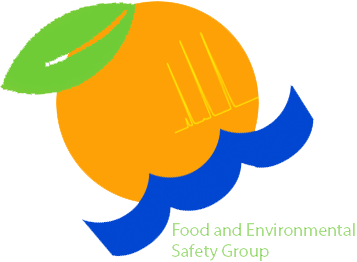The environment suffers the continue discharge of anthropogenic contaminants. Including organic compounds, such as, pharmaceuticals and personal care products (PPCPs), pesticides, perfluoroalkyl substances (PFASs), illicit drugs and microplastics. Furthermore, some of these contaminants are considered emerging contaminants. Wastewater treatment plants are one of the main sources of contaminants discharge to aquatic environments, which have high environmental value, are crucial for biodiversity and support many other ecosystems. For all these, the study of the occurrence, behaviour, and fate of the contaminants in the aquatic environments is crucial.
A remarkable point related to the study of anthropogenic contaminants in the environment is that, the studies focused on biotic matrices are scarce yet. On the one hand, the presence of interfering compounds in the biotic matrices such as lipids, proteins, and pigments, entails a high degree of complexity and poses a challenge for the correct detection and determination of organic pollutants. On the other hand, the mechanisms related to the exposition of these contaminants such as distribution or bioaccumulation and elimination, are very complex. As the aquatic environments are usually the most affected by the discharge of anthropogenic contaminants, the study of aquatic biota should be a priority.
Taking into account all of this, the general objective of this thesis is the environmental risk assessment of the aquatic ecosystems due to the discharge of organic pollutants, including the assessment of sources, transport and fate, possible synergies and effects in the aquatic biota. tarting with a research about the current state of knowledge of the challenges related to the complexity of the analysis of biota samples and the contaminants usually determined in them. And followed by the assessment of the anthropogenic pollutants presence in aquatic environments. Including surface waters and irrigation channels and other matrices that could potentially release pollutants to the aquatic environments, such as sediments. .
Then, a selection of PPCPs, pesticides, PFASs and illicit drugs was made. Considering the report of their presence in aquatic environments also favouring the selection of not well-known compounds, such as the illicit drug bufotenin. Then, both extraction and analytical methods were developed and validated for the determination of these contaminants in mussel and eel matrices.
Finally, laboratory tests under controlled conditions were carried out. M. galloprovincialis was exposed to mix of contaminants and microplastics to study their bioaccumulation and elimination mechanisms, and the possible influence of the presence of microplastics in these processes. On the other hand, V. unguiculata was exposed to ibuprofen during its germination and growth, to study the uptake and metabolism of this pharmaceutical, as well as its distribution in the different parts of the plant.



